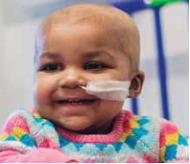In 2015, a one year old English girl named Layla was treated with gene edited immune cells that eliminated all signs of an aggressive leukemia that was killing her. Layla’s treatment was a one time technique. Chemo and a bone marrow stem cell transplant hadn’t eliminated her aggressive cancer cells.
Just before Layla’s first birthday, Waseem Qasim, MD, Consultant Immunologist at Great Ormond Street (Children’s) Hospital in London asked for a special license to try his experimental product, which was quickly approved. This experimental gene therapy was applied, which led to a fast remission and after two months, Layla became cancer free. She then received another bone marrow transplant just to be more certain that the cancer cells were gone.
Nothing new, but gene editing involves altering or disabling existing genes. It took many years to develop the gene-editing tool that saved Layla, but thanks to a revolutionary method known as CRISPR, this can now be done in just weeks.
A trial in the U.S. will start soon and is far more ambitious. This involves adding an extra gene engineered to make the immune cells target tumors and then using CRISPR to disable the cancer genes. The addition of tumor-targeting genes has already produced very promising results in trials for cancers like leukemia, but has not worked for solid tumors. It is hoped combining the two techniques will make the treatments even more effective for most cancers.
If these trials show that editing cells’ genomes is safe, it could soon be used to treat a much wider range of diseases. This is another great use of technology saving lives!
~ Bob Larson is a former engineer, photo-journalist, technologist, and Marketing Director at 50 Plus Media Solutions.


